As the world of architecture and interior design evolves, the demographic makeup of our population also witnesses major changes. With an increasingly ageing population, the world of interior design is now seeing a greater emphasis on age-inclusive design.
Ensuring that our homes and spaces accommodate the unique needs of our elders is critical to their comfort, safety, and quality of life, especially at a time when they often need a lot more physical support than ever before.
If you’re looking to design the interiors of your brand-new home and need to cater to the unique needs of an elderly member, we show you how you can incorporate age-inclusive design elements into your interiors.
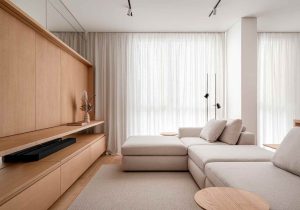
While our home interiors tend to be practical in terms of storage, they often ignore practicality from the perspective of elderly members. The lack of support and elements in a home’s interiors often makes their daily lives difficult, making simple movements and activities a challenge.
The key to ensuring that the elderly members of your family enjoy just as much comfort in your home as you do is to follow age-inclusive design practices when designing your interiors.
Age-inclusive design refers to a philosophy that aims to cater interior design to people of all ages and physical abilities. The key is to make design inclusive across someone’s lifespan, and not just accessible in the simplest sense of the word.
There are several ways in which you can make home interiors accessible to people of all ages and disabilities. The forthcoming sections discuss some of these methods in more detail.
Home interiors that are age-inclusive typically prioritise accessibility at every turn. The key is to design spaces that don’t have any barriers to practising daily activities and that allow elderly members to use their facilities with ease.
Some of the ways you can make your home accessible are by adding ramps in places that typically have stairs, making doorways wider, and adding grab bars in bathrooms to offer people adequate spaces to get support.

Lighting plays a key role in adding to the ambience of your home’s interiors. However, its benefits go far beyond the aesthetic appeal of your space. A well-lit space makes it easier for those with visual disabilities or simply declining vision to be able to see their surroundings well enough without any barriers affecting their movements.
One of the best ways to cater to the different lighting requirements of every member of your family is to use lighting fixtures with adjustable brightnesses. This way, you can increase the brightness whenever needed and vice versa.
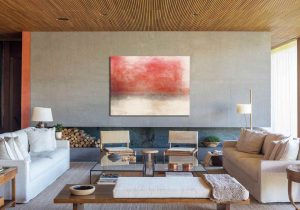
The kind of flooring you choose in your space can have a significant impact on factors like mobility and safety. When you’re older, your chances of slipping on floors and sustaining serious injuries are a lot higher. This is why it’s crucial to choose materials that aren’t slippery or glossy.
Additionally, if your space has rugs or carpets, fastening them to the floor and choosing options that are slimmer are a much better option as they make your floors as level as possible.
Last but not least, you should also ensure that your home has little to no height variations across the different spaces in it. These ensure that tripping hazards are brought down to a minimum and make mobility easier for those with weaker joints in their ankles and knees.
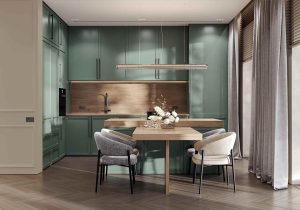
The kind of furniture you choose and how you place it across your home’s layout can also play an essential role in catering to an age-inclusive design in your home. For instance, ensuring that sharp corners are removed or padded can significantly help reduce the risk of injuries, especially if your doorways or layout in general are narrower or smaller.
Next, ensuring that your floor isn’t cluttered with excessive furniture can also help in the process of achieving an age-inclusive design. Cluttered spaces tend to leave much smaller gaps with individual pieces of furniture, making it difficult for older people or those with disabilities to move around, particularly if they rely on a wheelchair.
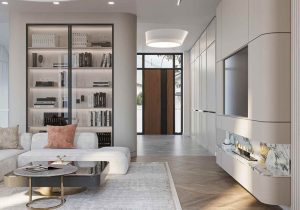
One of the best ways you can incorporate age-inclusive design in your homes is to make use of technology. With a host of smart devices that can be linked to all your appliances, homes today have become increasingly accessible.
These smart devices can be used to control aspects like lighting, heating and cooling, among several others, allowing those who typically need some support to feel more independent when doing basic tasks.
Features like video doorbells and motion sensors can also make homes more secure for anyone who’s older and lives alone. They allow you to view and monitor all entrances and exits to your home via motion sensors and video cameras to enhance security.
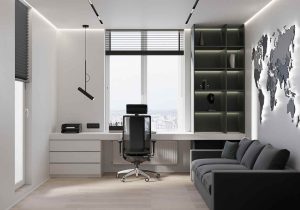
Most people past a certain age feel most comfortable in their existing homes and choose not to move into a newer space. They often spend years in their homes, and these long periods of time also see a change in how they use their spaces.
The key to ensuring that your home interiors serve you well for years to come is to incorporate modular furniture that can be adapted based on your needs. For example, using a sofa set that can also be turned into a bed or furniture that allows you to transform a bedroom into a study, for example, can ensure that the same space can serve multiple functions with time.
There are several benefits to incorporating age-inclusive design in your homes. Every step towards making your home interiors more accessible helps enhance the quality of life of someone who’s older or has a certain disability that affects their physical mobility.
Making your home interiors age-inclusive is a thoughtful process that keeps the needs of every age and generation in mind. It ensures that those who are older don’t have to rely on other members of the household for the smallest of tasks. This helps reinforce their independence and enables them to care for their needs without barriers.
Through the use of non-slippery flooring, adequate lighting, the right furniture, and so on, you too can future-proof your full home interiors by way of age-inclusive design elements. If you’re looking to design the interiors of your brand-new home and make them age-inclusive, reach out to us at Bonito Designs.
We’re India’s only ISO-certified full home interior brand that’s dedicated to providing end-to-end solutions that cater to your specific needs.